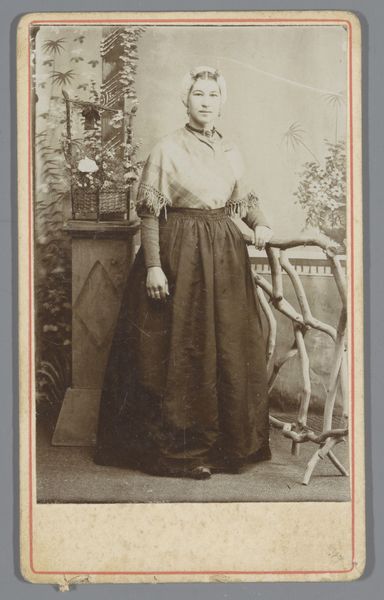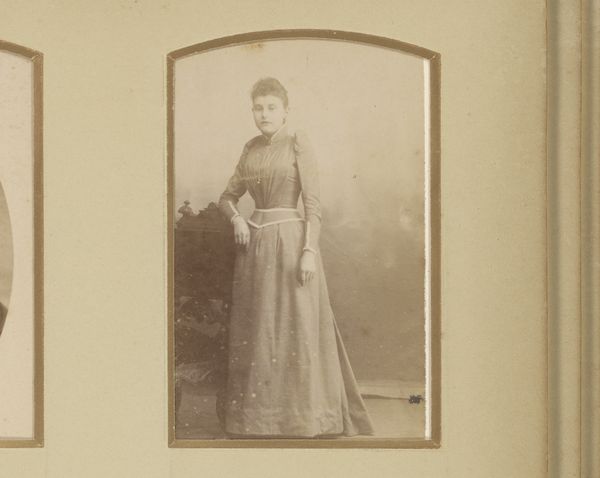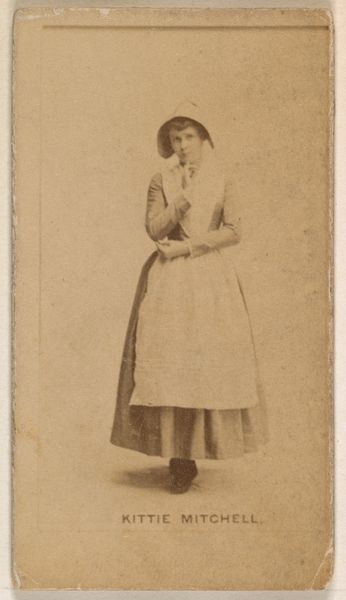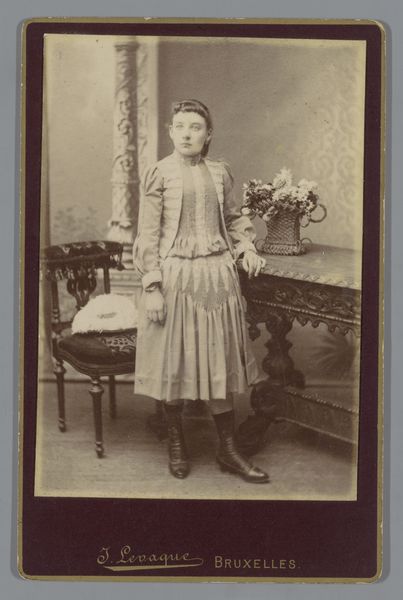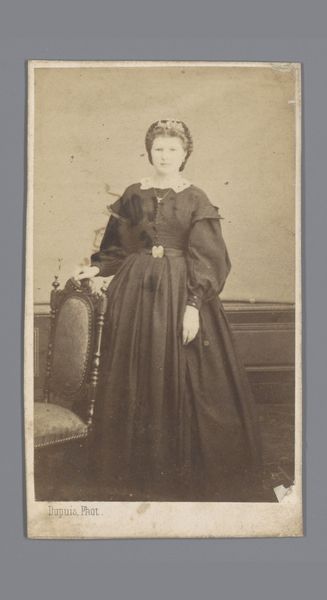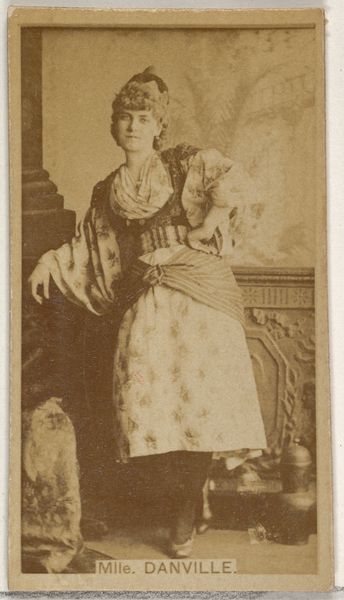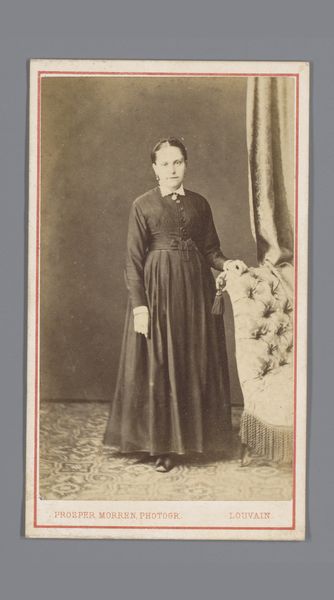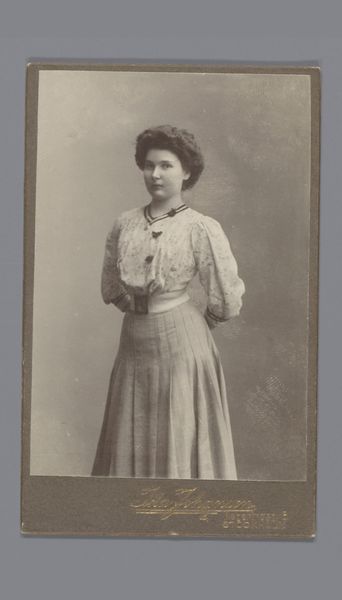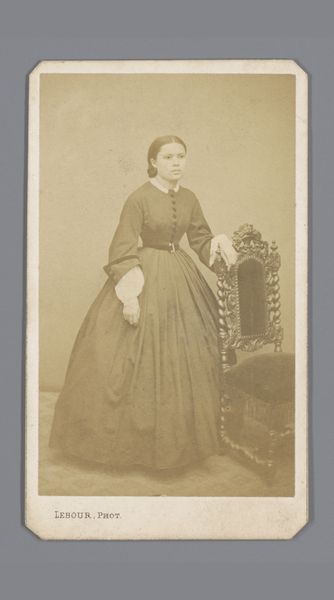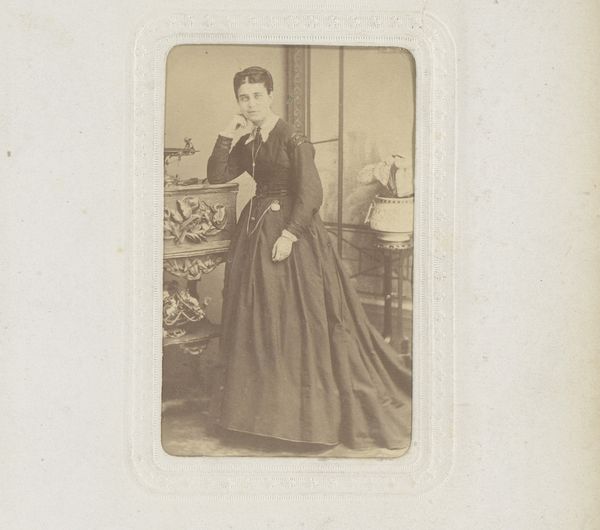
photography
#
portrait
#
photography
#
genre-painting
Dimensions: height 163 mm, width 105 mm
Copyright: Rijks Museum: Open Domain
Editor: So here we have a photograph titled "Portrait of an Unknown Girl," created sometime between the 1890s and 1900s by O.P. Steffe. It’s quite striking – almost dreamlike in its sepia tones. What do you see when you look at this, from your perspective? Curator: Well, I'm immediately drawn to the materiality of the photograph itself. Think about the collodion process or gelatin silver prints that would have been common then. The surface sheen, the chemical reactions that create the image - it’s not just a picture, it's a made object. And consider the sitter’s dress – the fabric, likely mass-produced but with hand-sewn elements, points to the industrialization of clothing alongside the persistence of domestic labor. Editor: That’s fascinating, I was mainly considering it as a way of documenting a person. Curator: Precisely! But this is more than just a record. It’s a confluence of industrial production and individual presentation. Even the painted backdrop – a mass produced, almost theatrical scene – contrasts with the posed, yet potentially authentic, stance of the girl. Editor: So the act of photography itself is part of the social context. Curator: Exactly. How was photography consumed? Who had access to it? Studio portraits like this one offered a particular kind of self-representation. They controlled a vision and a message to send. Editor: That is interesting to consider, what it meant to people back then. So this photograph becomes a window into late 19th-century material culture and class dynamics. Thank you! Curator: And we’ve only scratched the surface! Thinking about the materials helps us understand the power structures at play and what the objects reflect about society.
Comments
No comments
Be the first to comment and join the conversation on the ultimate creative platform.
